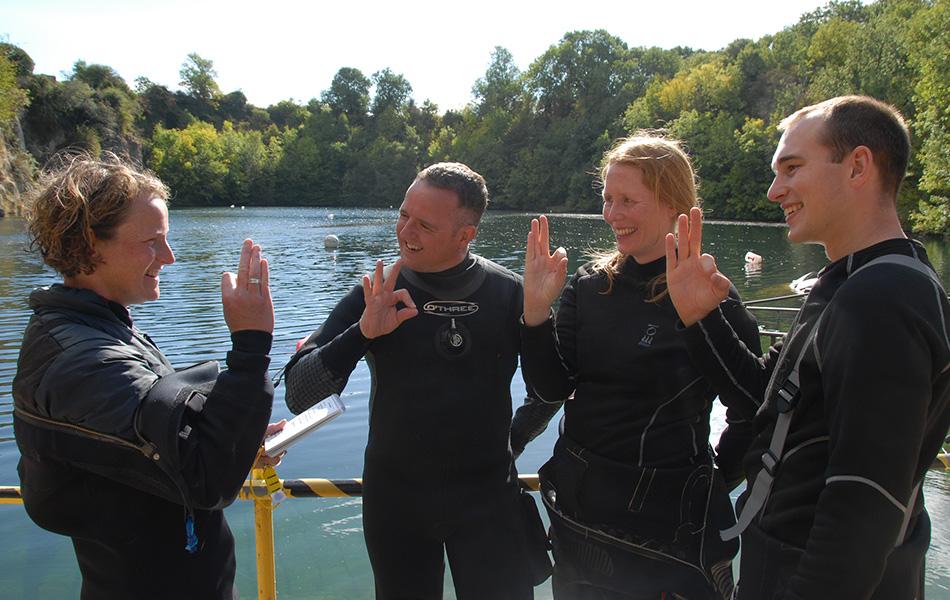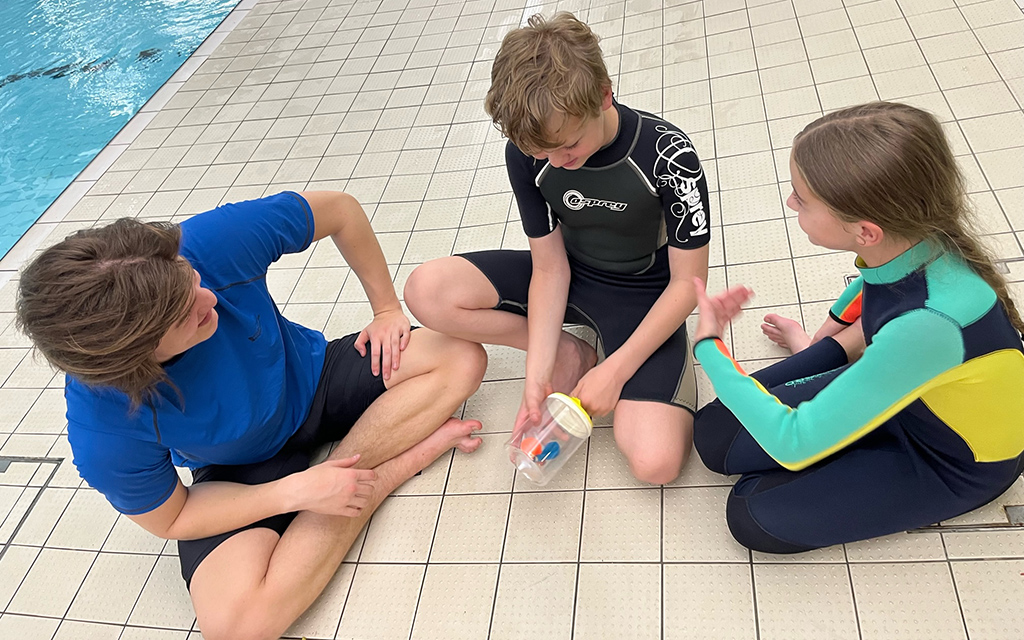
A BSAC Assistant Instructor at Buxton Sub-Aqua Club has discovered a visual approach to dive instructing has helped a keen young member achieve a ‘safe diving’ dream.
Nadine Weston realised that Ocean Diver lessons, theory as well as practical, had to be broken into many smaller steps and sections to ensure knowledge was embedded in and that good practice setting up and caring for equipment was well observed.
Buxton SAC has a team of enthusiastic instructors and a dedicated training officer within its branch. Only after Nadine had observed many lessons and grown in confidence in the run-up to Autumn 2022 was she first given the opportunity to take a 12-year-old for a try dive.
Her first student was hooked, which presented Nadine a challenge: how differently do you teach a 12-year-old from an adult?
Nadine said:
Our club, surrounded by the Peak District, has seen an increase in number of young people wishing to learn to scuba dive. The club now includes a group whose ages range from 10 to 17 years old, boys and girls, with various levels of general science knowledge or expectations of the sport. Their dreams vary from discovering or caring for the underwater wildlife to making their profession to become commercial divers!
When, a while back, I decided to enrol on a BSAC instructor course, little did I realise I would be challenged with helping a 12-year-old (who preferred swimming underwater rather than above!) achieve their ambition to learn to dive using SCUBA equipment. So far, I had only met adults or students wishing to enrol on a marine biology university course who made the dream become a reality.
I soon realised that the approach to teaching a young 12-year-old student had to take a slightly different path.
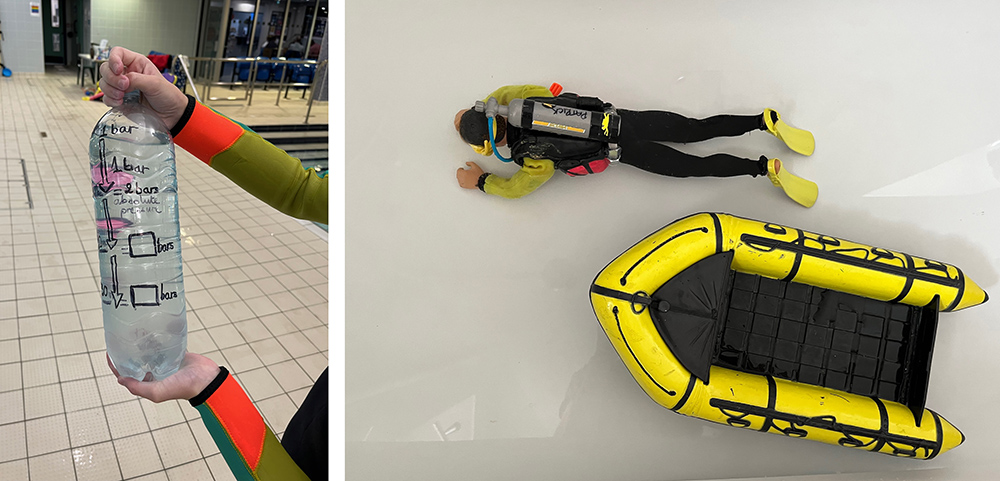
[L] Boyle's Law in a bottle; [R] 'Patrick' the toy diver model (trim and buoyancy) and RHIB
Visual learning
To bring theory lessons to life, Nadine created visual aids such as models and props which helped the student understand science concepts better as well as retaining scientific and technical vocabulary. Even wearing a simple washing up glove dipped in the pool helped the student understand what and how pressure affects the body. Manipulating props, such as a model of the lungs, an annotated water bottle to explain Boyle’s law, a bottle of fizzy liquid to illustrate Henry’s law, and a model of a diver or pictures of types of boats, helped the student visualise what they had understood from the theory lectures.
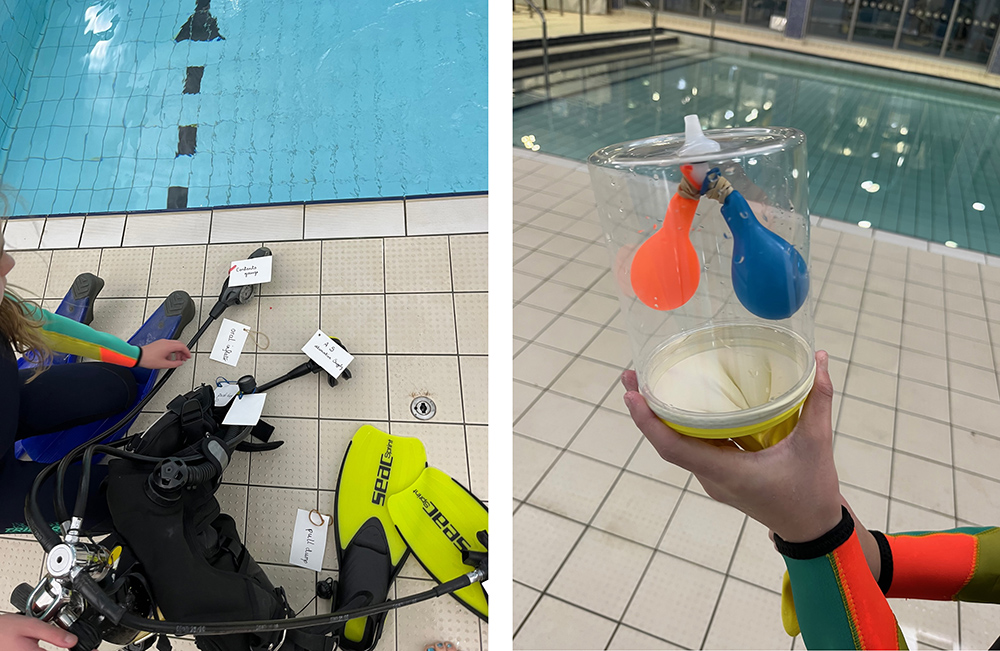
[L] tags on equipment present a challenge for the student; [R] model showing the effects of pressure on lungs
Some of the Ocean Diver course presentation slides were adapted to link prior science knowledge the student may have had with new facts pertaining to diving. For example, how much was known about the respiratory and circulatory systems? Gases in the atmosphere? Had the student heard of atmospheric pressure? In fact, for every theory lesson, Nadine couldn’t presuppose what knowledge the student had, and each session started with a set of astute questions to assess what the student already knew or what they had retained from a previous session.
The use of flash cards or sticky notes to either label equipment, learn BSAC diving instructor acronyms (SEEDS, BAR, SCUBA) or revise facts learnt from previous sessions proved to be a very effective method to retain facts in preparation for the theory test paper.
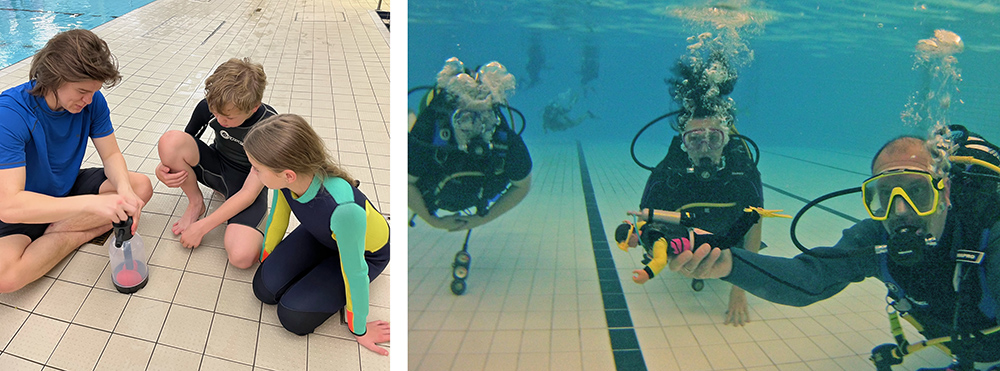
[L] gas effect on lungs demo; [R] Patrick (the plastic toy diver) gives a demo
Pool sessions
During pool sessions, the use of a waterproof slate to quickly draw a model of what the session would cover was a useful tool to set clear intentions and was used as a revision tool for the follow-up session. To ensure there was a link made between what was learnt during the theory lessons and practical sessions, a set of four or five quiz-type questions were written on a slate that the instructor would challenge the student to answer at the same time as they were setting equipment up. Some examples included: markings on the cylinder, naming parts of the SCUBA equipment or again what was the danger of positive/negative buoyancy. These proved to be a very successful way to learn and build confidence. The student felt a sense of achievement and enjoyed repeating a task a few times, for example from partial mask flooding before moving onto the next step, full mask flooding.
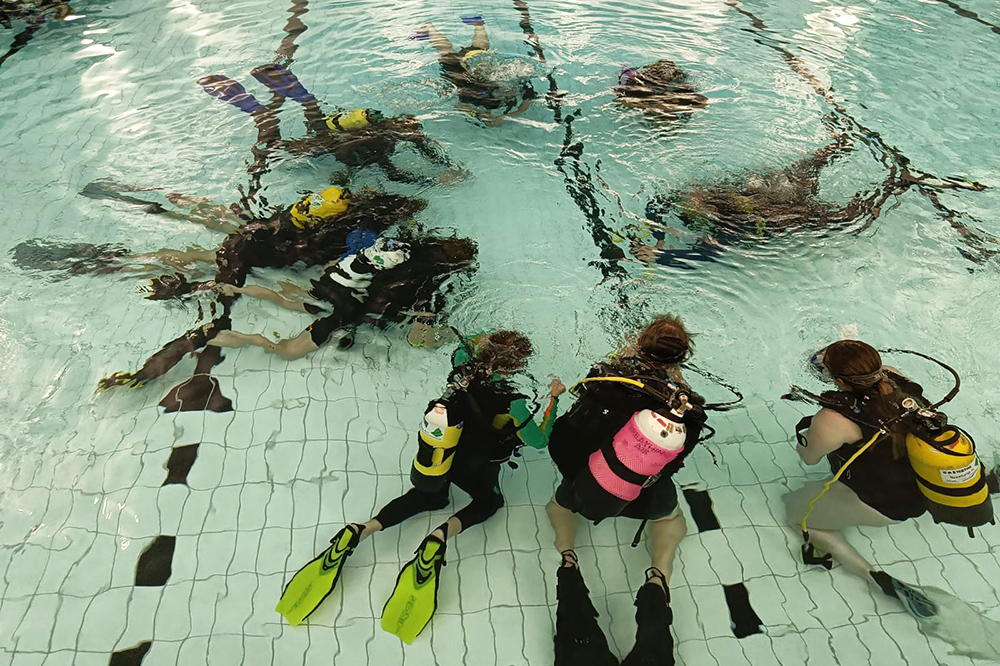
Patrick (the plastic toy diver) holding court
Open water learning
For open water sessions, Nadine teamed up with a fully qualified and well experienced instructor, which allowed her to observe the student’s progress from pool sessions, and how the skills practised in the pool were approached and executed in a different environment.
On seeing how effective her instructor techniques have been, Nadine said:
Helping this 12-year-old become an Ocean Diver has been a very rewarding and most enjoyable experience I am glad I have had the opportunity to undertake. “It’s not what happens to you but how you react to it that matters” (Epictetus).
Next challenge: I now have the younger sibling to work with, alongside another Assistant Instructor!…
Start your instructor journey with BSAC
Learn more about the BSAC Instructor Training Scheme and how you can start your own instructor journey.




